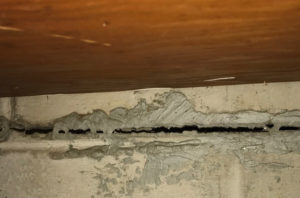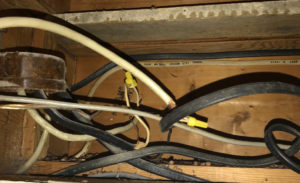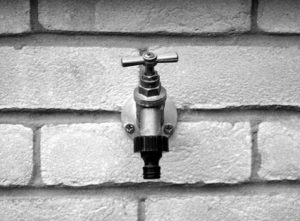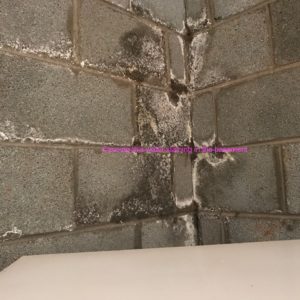So you think you’ve found your dream home. It has everything you want – great location, generous closet areas, and spacious, light-filled rooms. You’re so anxious to put down the winning bid that you’re tempted to up your offer to edge out the competition. Hold on! Time to put on the brakes. Before you buy that proverbial palace, be sure you’re not setting yourself up for expensive repairs right from the get-go. Before signing a contract, be sure to get a comprehensive home inspection to rule out any major problems with the house.Most home inspections reveal issues that need to be addressed. This is a normal part of buying and selling real estate. However, some issues may be serious or even dangerous. Let’s take a look at five potential home inspection deal breakers.
- Cracks in walls, ceilings, or foundation
Interior or exterior cracks in walls or ceilings might indicate warping or shifting of the house’s frame, or even foundation defects. Perhaps the ground has shifted beneath the house. One reason for this can be grade sloping (or draining) back toward the home. Ideally, a home should sit on a little hill. This allows rainwater to travel away from the home’s foundation. If the land slopes toward the house, this can lead to water intrusion into crawl spaces, damp, moldy basements, dry rot in the walls, and other troublesome, costly repairs. If your inspection reveals sizable cracks, get an estimate on repair costs before jumping in.
- Improper wiring
The condition of a house’s wiring must never be taken lightly. Your inspector will look at the home’s wiring for such factors as ungrounded receptacles, lack of ground fault interrupters in wet areas such as bathrooms and kitchens, overloaded circuit breakers, wire splices without junction boxes, and signs of shoddy or amateur work.
One potential deal breaker is aluminum wiring, installed during the 60s or 70s. Aluminum wiring can cause poor or faulty connections, leading to telltale signs such as recurring flickering or frequent burnout of lights, hot switch plates and receptacles, a burning smell, failed power to outlets without tripping a breaker.
Rewiring a home may cost from $6,000 to $15,000, depending on the home’s size and how easily an electrician can access and replace the old wiring.
Is rewiring one of the home inspection deal breakers? Not necessarily, but understand the costs involved and find out whether the seller will negotiate this expense in the cost of the home.
- Low water pressure
Water pressure can vary significantly from region to region, but unusually low water pressure may indicate deeper issues. There might be a water leak somewhere – a slow drip in a pipe or maybe a cracked tub seal. Finding the source of the leak is critical.
A cracked tub seal is no deal breaker. If there is access below the floor, it might cost about $500 for the fix. However, if this has been a long-standing issue, there might be rot or mold in the subfloor sheathing and joists. This can drive up repair costs very quickly.
But other plumbing problems can be costly. A slab leak might set you back $3,000.
- Recent paint job in a specific area
Maybe that room really needed painting. Or maybe the seller is hiding something, like cracks, mold, or signs of moisture in walls. Feeling the newly painted walls might give a clue, such as soft spots or suspicious bumps.
Would this be one of our home inspection deal breakers? That depends on the extent of the damage. If just a small section of drywall and insulation needed replacing, the costs would be modest. The source of the damage, on the other hand, may be costly. Don’t guess. Let an experienced home inspector get to the source of the problem.
- Unpleasant odors
You might not spot mold, mildew, or water damage (especially if it’s been painted over), but your nose knows. If you smell something unpleasant, it’s likely a problem with excess moisture in the house.
Some selling agents try to mask unpleasant odors with plug-in air fresheners or fresh baked chocolate chip cookies. Try to find the smell beneath the smell. Mold and dampness may linger beneath any attempts to cover them up.
One trick is to take a good whiff of the closets and basement. If these areas smell unpleasant, there may be an underlying problem with moisture. Mold removal can be costly. Mold abatement in a crawlspace might cost between $500 and $4,000, depending on the size of the area affected. Mold in the attic and HVAC ducts could set you back as much as $6,000 or more.
Mold should never be taken lightly. Health problems from mold can run the gamut from irritating to life threatening. So if your “dream house” is plagued with mold problems, it might be prudent to walk away from the deal.
Call for an appointment
Ready to buy your dream home? Be sure it doesn;t have one of our home inspection deal breakers, Call Peter Young Home Inspections and put our knowledge and expertise to work for you. Click the link below to contact us.





